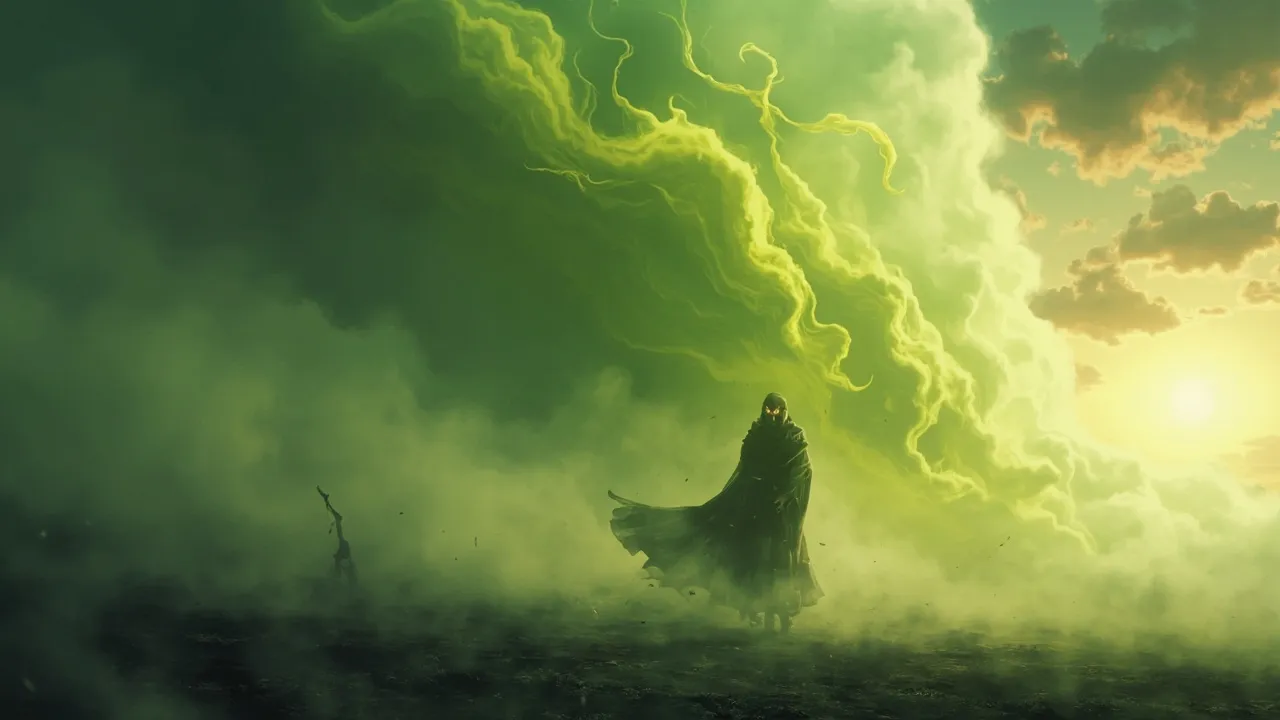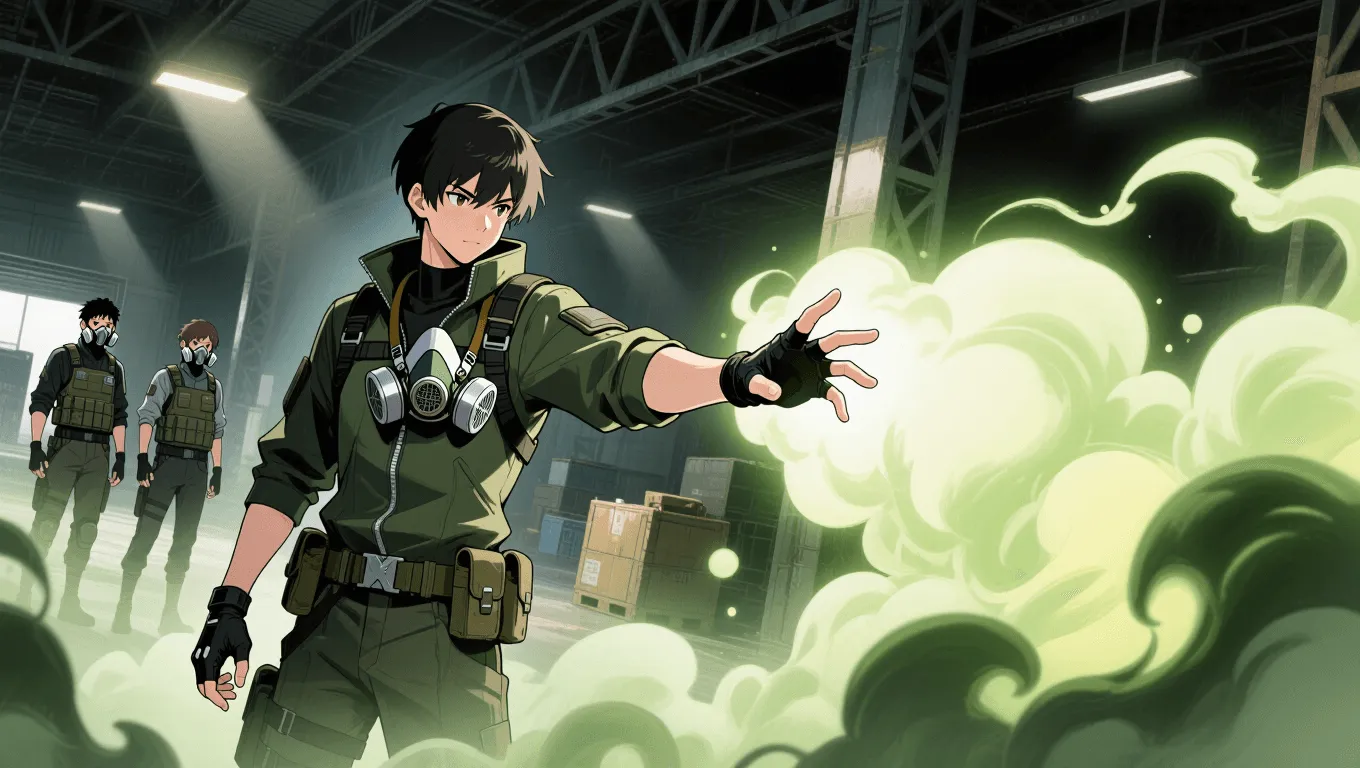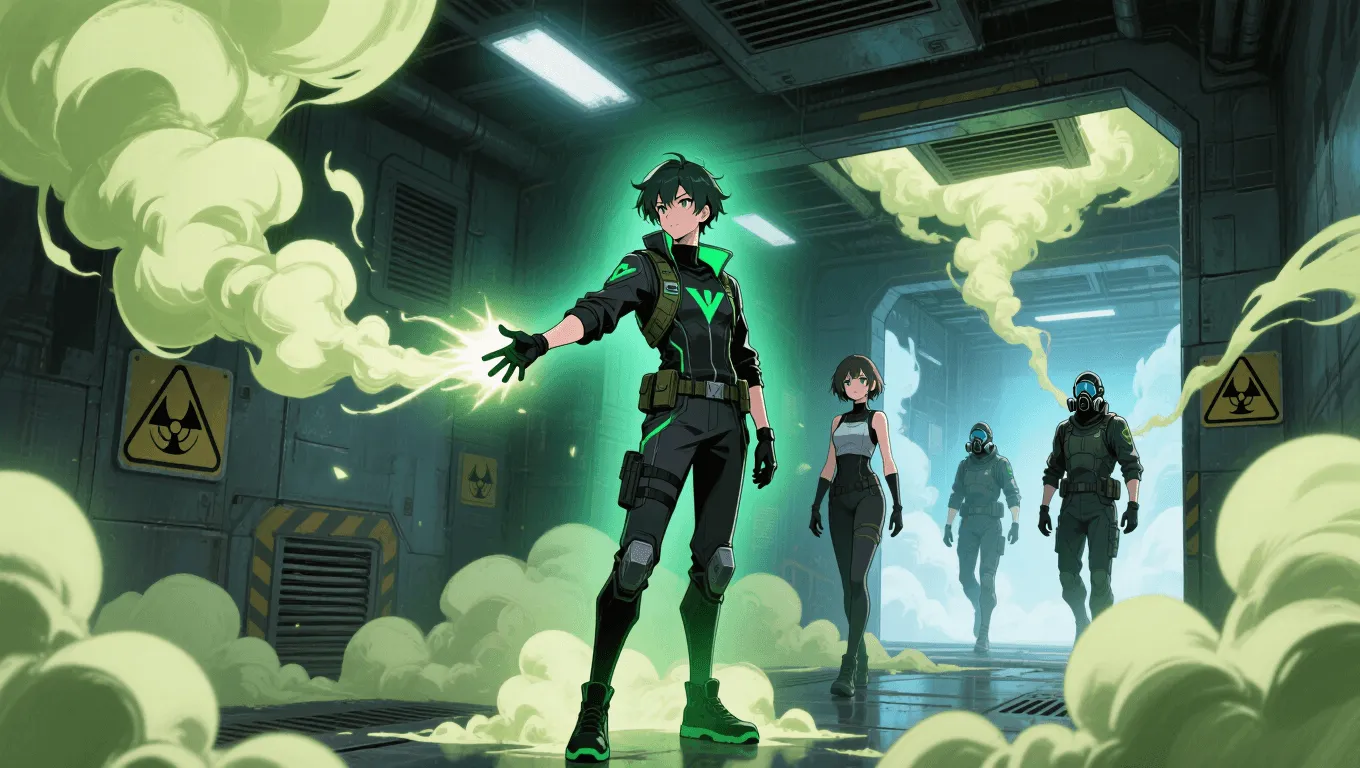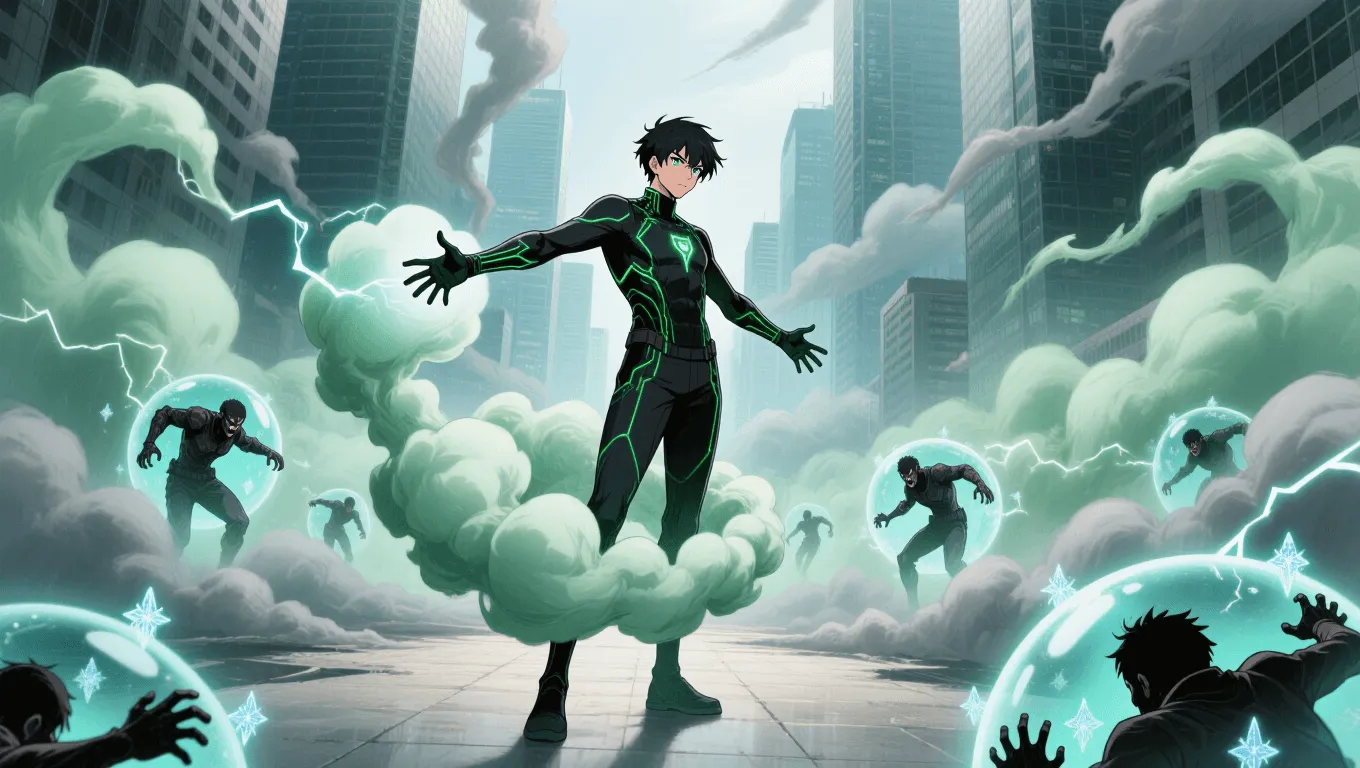Toxic Cloud

Toxic Cloud Video Demo 🎬
Table of Contents
- Toxic Cloud Video Demo 🎬
- What Is Toxic Cloud
- Core Abilities of Toxic Cloud
- Application / Tactical Advantages in Combat
- Level: Level 1 🏙️, Level 2 🌇, Level 3 🌃
- Limitations of Using the Toxic Cloud
- Weakness Against What Other Superpowers
- Synergistic Power Combos
- Application / Tactical Advantages in Combat (Quick Scenarios)
- Known Users
Toxic Cloud is a battlefield-altering superpower that lets a user generate and manipulate poisonous gas as a drifting, controllable fog. In fiction and RPG settings, Toxic Cloud appears as miasma control, venomous fog, aerosol toxins, or a corrosive cloud that debuffs, disorients, and damages enemies over time. This guide explains how Toxic Cloud works, its core abilities, tactical applications, level progression, limitations, weaknesses, synergistic power combos, and famous characters who wield similar techniques. For more powers, explore the superpower wiki or roll something unpredictable with the random superpower generator.
What Is Toxic Cloud
Toxic Cloud is the ability to produce, shape, and sustain a mobile area of noxious gas. Unlike simple gas emission, this superpower emphasizes control: cloud generation, density modulation, airflow steering, and targeted dispersion. Users can switch between effects—neurotoxin mist, pathogen-laced vapor, irritant smog, or corrosive fumes—depending on context. In many systems, this power inflicts damage-over-time (DoT), blinds vision, applies status effects (poisoned, panicked, slowed), and denies territory.
Common related terms include poison gas manipulation, miasma control, smog control, biohazard aura, and respiratory attack. Advanced practitioners often develop partial gas immunity, selective targeting, and antidote synthesis or on-the-fly neutralization mists.
Core Abilities of Toxic Cloud
1) Gas Generation & Composition Control
Users create clouds ranging from mild irritants to debilitating mists. Composition can be tailored:
-
Irritant smog: Burns eyes and lungs, causes coughing, blurs vision.
-
Neurotoxin mist: Induces dizziness, tremors, or short-term paralysis in some systems.
-
Corrosive cloud: Degrades armor, weakens structures, or erodes barriers over time.
-
Pathogen-like vapor (fictionalized): Applies disease or contamination debuffs in narrative contexts.
2) Density, Size, and Duration
Mastery determines how thick and wide the cloud becomes and how long it persists. Denser clouds cling to surfaces and fill depressions; lighter clouds spread quickly but thin out faster. Duration can be extended by sustained output or by anchoring the fog via microcurrents.
3) Directional Control & Shaping
With precise miasma control, the user herds the cloud like a flock: funnels through doorways, wraps around cover, or forms stationary zones. Some versions allow sculpted “walls” of haze for line-of-sight denial.
4) Environmental Reading
Skilled users read currents, drafts, and thermal updrafts, adjusting emission to exploit terrain. They can slip vapor under doors, down stairwells, or across choke points.
5) Selective Immunity & Filtration
Most portrayals grant the user partial or full immunity to their own toxins. Advanced builds include on-demand filtration masks formed from the power, temporary toxicity resistance for allies, or localized decontamination bursts.
6) Antidote and Neutralizer Mists
High-level users can switch blends mid-fight—laying a harmful fog, then releasing a neutralizer aerosol to cleanse an area or protect allies. Some settings treat this as antidote synthesis.
7) Sensory and Tactical Utilities
A cloud doubles as soft cover, muffles sound, and marks movement as silhouettes. It also flushes enemies from concealment, triggers alarms when disturbed, or forces foes to use protective gear (hazmat suits, respirators), draining resources.
Application / Tactical Advantages in Combat
Area Denial and Zone Control
Toxic Cloud turns corridors, stairwells, and narrow streets into no-go zones. It stalls advances, breaks formations, and channels opponents into disadvantageous routes.
Attrition and Debuffs
DoT plus breathing penalties quickly wear down opponents. Even when not lethal, coughing, tearing, and nausea impair accuracy and coordination.
Crowd Management and Split-Push
In multi-enemy scenarios, a broad smog splits groups, isolates stragglers, or buys time to reposition. Against a single target, a dense neurotoxin mist forces panic movement and openings.
Vision and Information Warfare
The fog blocks line of sight, reduces enemy targeting, and hides ally repositioning. If paired with thermal or echolocation senses, the user gains asymmetric information.
Soft Siege and Structural Erosion
Corrosive variants weaken locks, hinges, or ad-hoc barricades over minutes, enabling quieter breaches than brute force (within fiction-safe bounds).
Clean Up and Retreat
A quick neutralizer release or a gust dispersal lets the team exit without lingering contamination, then resets the battlefield for pursuit or disengagement.
Level: Level 1 🏙️, Level 2 🌇, Level 3 🌃
Level 1 — Fledgling Fumigator
-
Creates small, short-lived clouds (room-corner scale).
-
Composition limited to irritants; effects: coughing, tearing, mild nausea.
-
Control radius is close; wind easily disrupts shape.
-
Partial self-immunity; allies require masks or distance.
-
Best uses: escape screens, quick flanks, simple choke denial.

Level 2 — Field Toxicologist
-
Sustains room- to hallway-sized clouds with moderate density.
-
Access to specialized blends (nonlethal neurotoxin mist, mild corrosive haze).
-
Can steer clouds around corners and through vents; sets persistent zones.
-
Gains selective immunity and can extend brief resistance to allies.
-
Introduces antidote/neutralizer bursts to cleanse spaces after control.

Level 3 — Master of Miasma
-
Projects building-floor or plaza-scale fog banks; multi-zone management.
-
Fine-grained density gradients: dense cores for damage, thin veils for stealth.
-
Switches compositions on the fly; overlays debuffs (slow, blind, panic).
-
Near-total immunity for self, moderate bubble protection for teammates.
-
Environmental mastery: rides thermal updrafts, counters wind shear, and fuses cloud constructs with other elements (electric arcs, freezing microcrystals) in advanced combos.

Limitations of Using the Toxic Cloud
-
Wind Dependence: Strong aerokinesis, fans, or open crosswinds disperse or redirect clouds unpredictably.
-
Friendly Fire Risk: Without clear comms or protective gear, allies can be impaired; disciplined spacing is vital.
-
Line-of-Sight Tradeoff: The cloud hides allies but also clouds their own aim unless equipped with alt-senses.
-
Enclosed-Space Ethics: In tight quarters, concentrations escalate quickly; responsible users must moderate intensity.
-
Gear Counters: Filtration masks, hazmat suits, and sealed armor blunt effects, forcing higher output or different blends.
-
Resource & Stamina Costs: Maintaining density, switching compositions, or sustaining multiple zones taxes focus and energy.
-
Environmental Aftermath: Persistent smog may linger; conscientious users employ decontamination or neutralizers to restore the scene.
Weakness Against What Other Superpowers
-
Air Purification / Aerokinesis: Clears, thins, or blows the cloud away; vacuum creation can “suck” a zone clean.
-
Weather Control: Sudden squalls, downdrafts, or pressure shifts scramble cloud geometry and dispersion.
-
Hydrokinesis / Water Jets: Washes particulates from the air and surfaces; rainfall analogs speed settling.
-
Cryokinesis: Freezes moisture into micro-ice that traps or drops aerosols; brittle particulates fall out.
-
Forcefields / Barriers: Creates sealed corridors or domes that the cloud cannot penetrate.
-
Gas Absorption / Elemental Nullification: Directly consumes or neutralizes airborne toxins.
-
Adaptive Physiology / Poison Resistance: Heavily reduces status effects; demands composition switching.
-
Photokinesis (Hard Light): Restores line of sight and navigation through illuminated paths.
Synergistic Power Combos
Wind Manipulation + Toxic Cloud
Gentle microgusts herd fog through vents and around shields with surgical accuracy. High synergy for area denial, room-clearing, and “pressure herding” enemies into traps.
Weather Control + Toxic Cloud
Thermal updrafts loft a smog dome over strategic zones; temperature inversions pin it close to ground for maximum exposure. Controlled drizzle can “activate” corrosive effects on surfaces.
Illusion Casting + Toxic Cloud
While foes cough and lose visibility, illusions multiply targets or project phantom openings. The fog hides telltale cues, amplifying deception.
Electric Discharge / Static Charge + Toxic Cloud
Ionization can clump or separate particulates, shaping the cloud edge like a soft barrier. In some systems, electrical arcs through corrosive haze deal bonus damage.
Cryokinesis + Toxic Cloud
Flash-chilling one flank precipitates toxins out of the air to create safe corridors, while leaving a dense, harmful core elsewhere—advanced zone sculpting.
Earth or Metal Manipulation + Toxic Cloud
Seal doorways and vents to keep miasma contained; open kill-slits or grates for controlled release. Corrosive blends gradually soften enemy barriers.
Teleportation or Aerial Mastery + Toxic Cloud
Teleporters relocate outside the fog to re-engage from clean angles; fliers perch above the layer, dropping into and out of concealment as needed.
Healing / Antidote Synthesis + Toxic Cloud
Team medics pre-buff with resistance, then trail a neutralizer mist to reclaim terrain—an elegant push-pull rhythm between control and safety.
Application / Tactical Advantages in Combat (Quick Scenarios)
Breach & Clear
A Level 2 user floods a side corridor with irritant smog, herds guards outward, then switches to a neutralizer to let allies pass with minimal exposure.
Objective Hold
A Level 3 user maintains a dense core on an objective, with thin veils radiating outward. Enemies must either tank debuffs or waste time purifying lanes.
Extraction Screen
On retreat, a user backfills the path with smog veils at intersections, blocking sight lines and discouraging pursuit while allies regroup.
Known Users
-
Scarecrow (DC Comics): Gotham’s fear scientist often deploys hallucinogenic gas clouds as psychological weapons. Learn more about Scarecrow.
-
Mysterio (Marvel Comics): A master of illusions who pairs visual trickery with gas-based smokes and mists to confuse opponents. See Mysterio.
-
Poison Ivy (DC Comics): Frequently weaponizes plant-derived aerosols and pheromones to control the field. Read about Poison Ivy.
-
Madame Hydra / Viper (Marvel Comics): Noted for employing toxins and gas dispersal in espionage and combat. Profile: Viper.
For more abilities that pair well—or counter these characters—browse the full superpower wiki and try a fresh roll on the random superpower generator.
